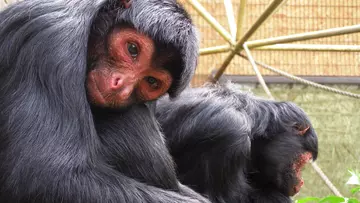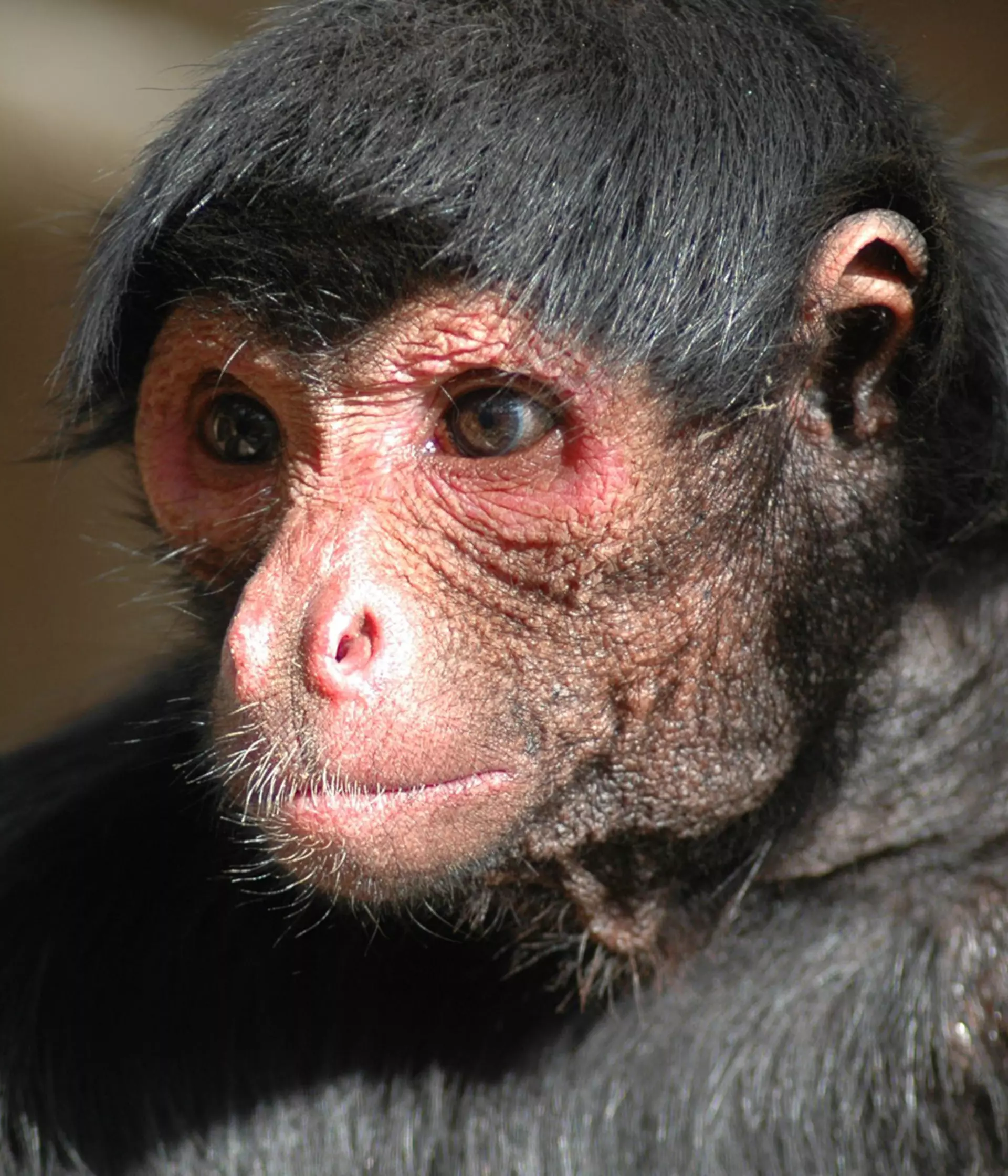
IUCN status
Vulnerable
Scientific name
Ateles paniscus
Order
Primates
Type
Mammals
Family
Atelidae
Region
South America
Habitat
Rainforest canopy
Spider monkey facts
- Spider monkeys are super agile, and have a prehensile tail which can grip onto branches. This gives them an extra limb to hang onto a branch as they swing through the trees in the forests of northern South America. They have a patch of skin on their tail, almost like a palm, which helps them to grip so effectively, so it really is like a fifth hand!
- Spider monkeys get their name from their long arms, legs and tail, which in proportion with their small head makes them appear spiderlike.
- These monkeys can live in large groups of 20-30 individuals with subgroups of two to three.
- Spider monkeys communicate with each other in these large groups by screaming, whistling, barking and grunting, scratching their chests and shaking trees, nodding their head and swinging their arms.
- Spider monkeys gather food in smaller subgroups of up to three monkeys feeding for the first and last two hours of their waking day.
- They remember past relationships with other spider monkeys by licking each other’s chests.
- Spider monkeys live up to 40 years.
We no longer have spider monkeys at London Zoo

What do spider monkeys eat?
Fruits, nuts, seeds, leaves and insects
Where do spider monkeys live?
Guyana, Surinam, French Guiana and Brazil.
Spider monkey threats
Forest destruction and hunting
Want to experience rainforest life?
A place in London like no other, with trees filled with monkeys, snoozing sloths and bats flying overhead!
